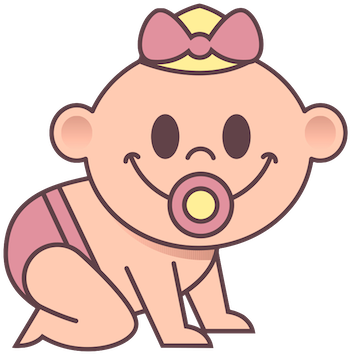Every parent holds their breath as they anticipate their child’s first smile, the moment they sit unassisted, or the day they stand up on their own. These are milestones—tentative markers along a path of development that all babies supposedly tread. Yet, the reality of child development is far more complex and nuanced. The American Academy of Pediatrics (AAP) and the Centers for Disease Control and Prevention (CDC) have laid out developmental milestones, but these benchmarks can often evoke a sense of anxiety rather than comfort. The critical take-away? There is no universal timeline or ‘normal’ for childhood achievements—each child’s journey is uniquely their own.
It’s tempting to depend on milestones as definitive indicators of a child’s future capabilities. However, relying on such markers can skew our perspective, leading to unnecessary comparisons and parental self-doubt. Every infant’s path is distinct, meandering between crawling, walking, or even skipping crawling altogether to dive straight into cruising along furniture. Understanding that babies develop at their own pace is essential in reshaping our expectations and reducing stress during those formative years.
The Science of Movement: Motor Skills and Their Timeline
Motor skills are a fascinating area of child development where expectation often clashes with reality. Pediatrician and parent coach Molly O’Shea, MD, FAAP, highlights that unlike social and language skills influenced by parental engagement, motor development is largely dictated by the baby’s biological rhythm. The conventional wisdom that half of all babies crawl by nine months isn’t a steadfast rule; rather, it’s a highly generalized figure that masks a significant variation. Development might encompass old-fashioned crawling on all fours or adopting unique methods like scooting or rolling to explore their world.
As Dr. O’Shea reiterates, while traditional crawling can offer benefits—improving coordination, strength, and spatial awareness—it’s essential to recognize that some children might leapfrog this phase without impacting their long-term development. In fact, not everyone manages to crawl in the classic sense; some choose alternative paths that may even enhance their early mobility skills. Encouraging, rather than pressuring, children during this formative phase aids their growth and fosters a positive relationship with exploration.
Seeking Balance: The Importance of Individual Progress
The shift in the CDC’s guidelines, particularly the removal of crawling as a mandatory milestone, has stirred debate among experts in child development. While some argue that even the act of crawling has myriad developmental benefits, it’s crucial to understand that moving from sitting to standing or walking can also signal healthy growth. If a child does not show a propensity for crawling by around nine months, but is displaying a desire to pull up or walk, parents should encourage that interest. As Brittany Ferri, PhD, notes, the focus should be on fostering movement in whatever form it takes for the child.
This emphasis on individual strength rather than conforming to standard timelines ultimately empowers children and their families. Parents are advised to take an observational approach, noting the various ways their child expresses mobility and encouraging those movements. Validating their unique style of exploration fosters confidence—both in the child’s abilities and in parental intuition.
Interactive Engagement: Playtime and Development
Bringing value to developmental playtime is pivotal. Providing ample opportunities for exploration on the floor, from tummy time to reaching for toys, paves the way for physical development. The right environment can encourage children to explore their limits. Limiting distractions, ensuring a safe space free from hazards, and modeling physical movement themselves are excellent ways for parents to boost their child’s motor skills.
Engagement is key. Simple strategies such as holding the toddler under their arms to encourage leg movement or showing them how to crawl can make a significant difference. Parents should cultivate a rich sensory environment that stimulates creativity and focuses attention—filling their child’s space with various textures and objects can invite movement and curiosity.
When to Seek Help: Red Flags and Reassurances
While developmental milestones serve primarily as frameworks for understanding childhood growth—parameters for dialogue with pediatricians—they shouldn’t be the sole focus of concern. If a parent feels uneasy about their child’s progress, especially around nine months, it’s prudent to initiate a conversation with a healthcare provider. The role of pediatricians is not only to assess but also to offer peace of mind and direction when unusual patterns appear.
Ultimately, it’s the embrace of variance that bolsters a healthier view of child development. Recognizing that each child can interpret milestones, or redefine them entirely, is liberating. This acknowledgment allows parents to celebrate their child’s unique skills and encourages self-assurance in their parenting journey. The joy of child-raising lies in the adventure—so let the milestones come and go, while we relish in the organic growth of our children.

